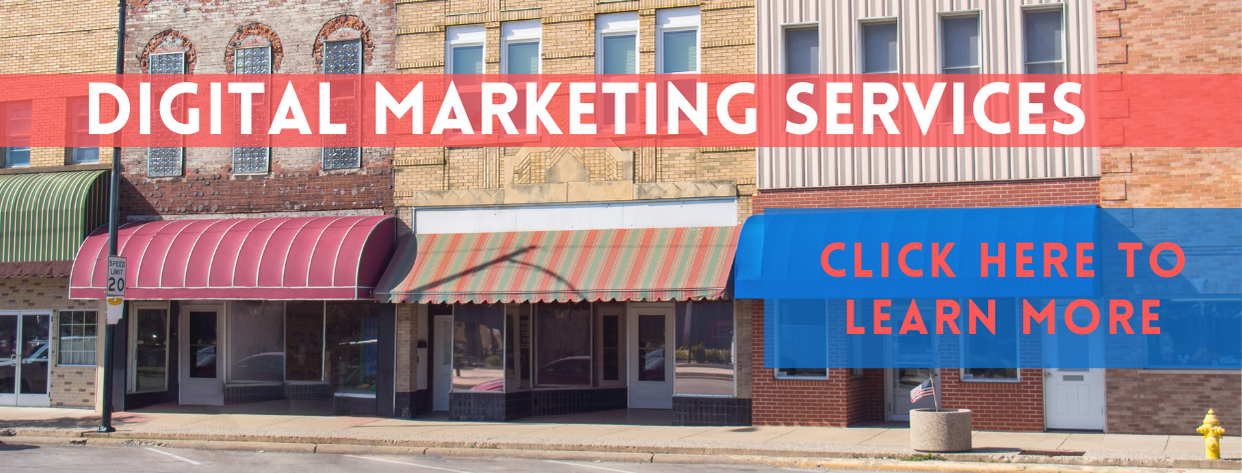3 Pillars Of Content Marketing Strategy
By Jaco Grobbelaar on Wed, Apr 02, 2025 @ 09:47 AM


[This article was first published in October 2023 and has been revised and updated for 2025.]
In today’s digital landscape, content marketing is the cornerstone of building meaningful connections with your audience. But it’s not just about creating content...
It’s about crafting a strategy that attracts, engages, and converts your ideal customers. But what makes a content marketing strategy successful? The answer lies in the three essential pillars: owned media, quality content, and distribution channels.
Content is Still King But Content Strategy Rules!
When these pillars - owned media, quality content, and distribution channels - are strong and work in harmony, your content marketing efforts can achieve incredible results.
And that begs the question, "What's do I need to "do" content marketing properly?"
In a previous article we explained that any content marketing strategy needs a documented plan to ensure that it will be executed as designed. And when it comes to plans and strategies, it has been rightfully said that, "If it's not written down, it's just a rumor."
But, sometimes, even a documented strategy plan can be deficient if these three pillars have not already been recognized and established as essential elements of your overall strategy. So, let’s break down each of these pillars and explore how they form the foundation of a winning strategy.
Pillar #1: Owned Media (Your Digital Foundation)
Owned media is the backbone of your content marketing strategy. It includes all the digital platforms and assets that your business owns and controls, such as your website, blog, and email list. Unlike rented spaces—such as social media platforms where algorithms dictate your reach—owned media gives you complete control over how your content is presented and consumed.
Why Owned Media is Critical:
- Brand Control: With owned media, you determine the design, messaging, and user experience. This ensures consistent branding and helps you build a recognizable identity.
- Longevity: Unlike social media posts, which can disappear from feeds in hours, content on owned media stays accessible and searchable for years, providing long-term value.
- Central Hub: Your owned media serves as the home base for all your content marketing efforts. It’s where you drive traffic from other channels and guide visitors to take meaningful actions, such as signing up for a newsletter or making a purchase.
Examples of Owned Media:
- Website: A well-designed, SEO-optimized website is the cornerstone of your owned media. It’s where visitors learn about your business, explore your offerings, and access valuable resources.
- Blog: Regularly publishing blog posts positions your business as an authority in your industry and helps improve your search engine rankings.
- Email List: Building and nurturing an email list allows you to communicate directly with your audience and drive repeat engagement.
Key Takeaway:
To strengthen this pillar, ensure your owned media is well-optimized, user-friendly, and regularly updated with fresh content. It’s your digital storefront, so make it shine.
-1.jpg?width=1000&height=550&name=Copy%20of%20Untitled%20Design%20(5)-1.jpg)
Pillar #2: Quality Content (The Core of Engagement)
Content is the heart of your marketing strategy. However, not just any content will do. Quality content—content that resonates with your audience, provides value, and aligns with your brand’s goals—is what sets successful strategies apart from mediocre ones.
What Makes Content "Quality"?
- Relevance: Your content should address the needs, pain points, and interests of your target audience. By solving problems or answering questions, you position your brand as a trusted resource.
- Value: High-quality content educates, entertains, or inspires. It’s not about selling directly but about building trust and providing utility.
- Clarity: Effective content is well-written, visually appealing, and easy to understand. A clear message ensures your audience stays engaged.
Examples of Quality Content:
- Educational Blogs: Informative articles that dive deep into topics relevant to your audience.
- Engaging Videos: Videos that demonstrate your product, share customer stories, or explain complex concepts in an easy-to-digest format.
- Infographics: Visually appealing graphics that present data or processes in an engaging way.
- Case Studies: Success stories that showcase the value your business provides.
Why Quality Matters:
High-quality content not only attracts visitors but also keeps them coming back. It establishes your brand as an authority and builds trust, which is essential for converting leads into customers.
Key Takeaway:
Focus on creating content that prioritizes your audience’s needs over self-promotion. Consistency is also crucial – publishing regularly ensures your audience remains engaged and your brand stays top of mind.
In addition, writing quality is as a much a part of the equation as is relevance to the search query that found your content via a search engine (e.g. Google). But there are a number of other factors that matter but are often overlooked. This excerpt from an article by Patrick Stox at Search Engine Journal provides some great guidelines:
Some content quality signals you can control
- Broken links.
- Wrong information.
- Grammatical mistakes.
- Spelling mistakes.
- Reading level.
- Excessive ads.
- Page load speed.
- Matching the user intent with the purpose of a page and type of content.
- Authority and comprehensiveness.
There are things outside of your control in the short term, but you can play the long game and continue to build your authority over time by consistently creating comprehensive content.

Pillar #3: Distribution Channels (The Reach Multiplier)
Even the best content won’t deliver results if no one sees it. That’s where distribution channels come in. These are the platforms and methods you use to share your content with your audience, ensuring it reaches the right people at the right time.
Types of Distribution Channels:
Organic Channels:
- SEO: Optimizing your content for search engines helps it rank higher and attract more traffic.
- Social Media: Sharing content on platforms like Facebook, LinkedIn, and Instagram to engage with your audience organically.
- Email Marketing: Sending newsletters and updates directly to your subscribers’ inboxes.
- Pay-Per-Click (PPC): Running ads on platforms like Google Ads or social media to promote specific content.
- Sponsored Posts: Partnering with influencers or other businesses to share your content with their audience.
Why Distribution is Crucial:
- Increased Visibility: Distribution ensures that your content is seen by as many people as possible, especially outside your existing audience.
- Engagement: Sharing your content on platforms where your audience spends their time increases the likelihood of interaction and engagement.
- Traffic Generation: Distribution channels drive traffic back to your owned media, where visitors can explore further and take action.
Choosing the Right Channels:
Not all distribution channels are created equal. Focus on the platforms where your target audience is most active and adapt your content for each channel’s unique format and tone.
Key Takeaway:
A strategic distribution plan amplifies the reach and impact of your quality content. Don’t just publish—promote.
Interconnection of the Three Pillars
These three pillars don’t operate in isolation—they work together to create a cohesive and effective content marketing strategy. Here’s how they interconnect:
- Owned Media as the Anchor: Your owned media provides the space to host and showcase quality content.
- Quality Content as the Fuel: High-quality content attracts, educates, and engages your audience, making your owned media valuable.
- Distribution as the Amplifier: Distribution channels drive visibility, traffic, and engagement, ensuring your content reaches its full potential.
Neglecting one pillar can weaken the entire strategy. For example, excellent content won’t succeed without a strong distribution plan, and an optimized website is meaningless without quality content to populate it.
Building a Strong Content Marketing Strategy
Mastering the three pillars of content marketing—owned media, quality content, and distribution channels—is essential for creating a strategy that drives results. Start by auditing your current efforts:
- Is your website user-friendly and optimized for search engines?
- Are you consistently creating high-quality content that resonates with your audience?
- Do you have a plan to distribute and promote your content effectively?
Strengthen each pillar to build a strategy that not only attracts an audience but also converts them into loyal customers. Remember, content marketing isn’t a one-time effort—it’s an ongoing process of creating, optimizing, and sharing value.
Ready to get started? Your audience is waiting!
A Solid Foundation for Content Marketing Success
Establishing a powerful content marketing strategy for your small business demands a harmonious integration of these three pillars: a solid web presence, the creation of quality content, and effective content distribution channels.
Embrace these components, adapt them to your business's unique needs, and consistently refine and improve your strategy as you learn more about your audience and the evolving digital landscape. By doing so, you'll create a robust framework that drives engagement, nurtures customer relationships, and ultimately boosts your business's success in the digital realm.
Successful Content Marketing is a Team Effort
By now you probably know that executing a successful content marketing strategy can drive traffic to your website and create new prospects for your business. And, with the proper pillars in place, you can build an effective and efficient content marketing process.
But achieving your marketing objectives with a great content marketing strategy will take time. It doesn't happen with a few blog posts or some other great content you might produce.
The overriding fact of content marketing is that people will need to consume your content for a while before they contact you. Yet, without your content compelling them to contact you, your goals may never be met. Without consistent, high-quality pieces being published with optimum frequency, you may fall short of your goals.
The good news is that you don't have to do it all alone. In fact, one of the best investments you can make with your marketing budget is to partner with a solid firm like BroadVision marketing. Click this link to get your free Complimentary Inbound Marketing Session so you can make an informed decision or call BroadVision Marketing at 707-799-1238.
You May Also Like
These Related Stories

3 Common Content Marketing Mistakes To Avoid

AIDA (Not The Opera) For Your Content Marketing Strategy

.png?width=302&height=75&name=BVM%20Logo%20-%20transparent%20(1).png)





No Comments Yet
Let us know what you think